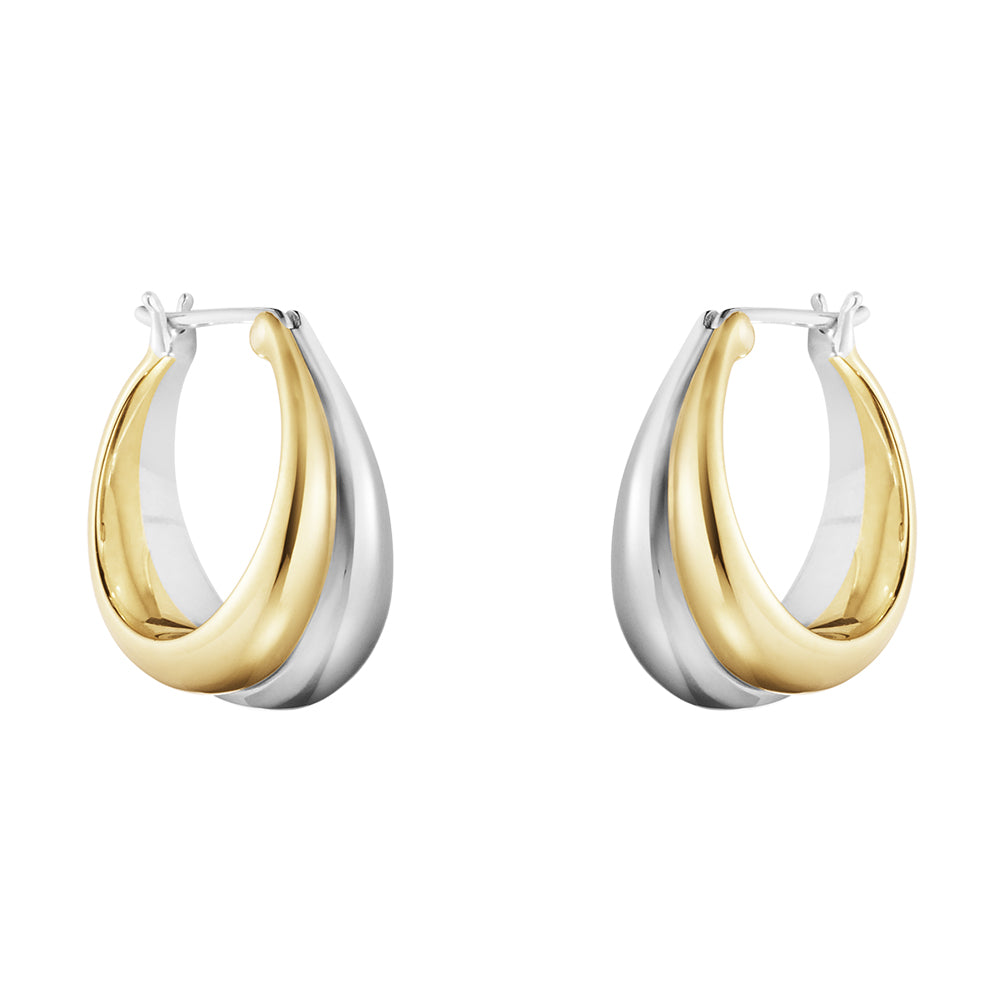
What Hand Does a Promise Ring Go On?
Introduction
A promise ring is more than jewelry—it is a silent language of devotion, a delicate emblem that bridges affection and future intentions. But when it comes to wearing one, a question lingers: what hand does a promise ring go on? The answer is as intricate as love itself.

The Timeless Symbolism of a Promise Ring
Promise rings are not fleeting trends of modern romance; they are deeply rooted in history. In ancient Rome, simple iron bands were exchanged as a prelude to marriage, functioning as early betrothal rings. Unlike legal marriage contracts, these rings were voluntary tokens of fidelity. Over time, they evolved into ornate gold designs, often set with carved intaglios to personalize vows.
Anthropologists from the Smithsonian Institution emphasize that jewelry functions not only as adornment but also as a social signal, shaping relationships and affirming identity. The promise ring sits firmly in this continuum: a small object with an outsized emotional resonance, carrying stories that outlive the wearers themselves.
Unlike engagement rings—which symbolize a formal, socially recognized intention—promise rings thrive in the realm of private meaning. They may signify exclusivity, abstinence before marriage, reconciliation after hardship, or even personal commitments like sobriety or self-growth. In that sense, promise rings are democratic emblems: affordable to many, yet infinitely personal.
Scene Setting Example: Imagine two university students, exchanging modest silver bands before a long-distance semester abroad. For them, the ring is not a placeholder for wealth or marriage—it is a tangible anchor to a bond that would otherwise live only in late-night phone calls. Years later, that same silver band may still sit in a drawer, carrying the weight of youth, resilience, and first love.

Promise Ring Left Hand vs Right Hand: Which Is Correct?
This question, central to both tradition and modern etiquette, has no universal answer. The hand and finger you choose often reflect a blend of culture, symbolism, and personal meaning.
Left Hand, Ring Finger
In Western traditions, particularly in the U.S. and U.K., the left-hand ring finger is dominant. This practice comes from the ancient Roman belief in the vena amoris, or “vein of love,” thought to connect directly to the heart. Although modern anatomy—confirmed by the American Heart Association—reveals no such singular vein, the romantic notion persists, making the left hand the conventional choice for love-symbolizing rings. For many, this placement signals a serious, almost engagement-like devotion.
Right Hand, Ring Finger
In many European cultures—Germany, Norway, Russia—rings marking commitment are traditionally worn on the right hand. Psychologists suggest this is tied to right-hand dominance, symbolizing agency, action, and the lived present. Wearing a promise ring on the right hand can thus be interpreted as: I act on my vows daily, not just in words but in deeds. Couples who choose this often want to emphasize commitment without prematurely echoing engagement customs.
Other Fingers
Younger couples, or those exchanging rings as friendship tokens, may select the middle finger (signifying balance), the index finger (authority and self-direction), or even the pinky (individuality and rebellion). Some even choose thumb rings, historically linked to willpower and independence. Such placements transform the promise ring into a statement of individual identity as much as relational devotion, highlighting that love can adapt to modern personal narratives.
Thus, the “correct” hand is not prescribed—it is instead an opportunity to personalize meaning, to tell your love story in your own symbolic language.

Scientific Insights: Why Finger Choice Matters
Though often reduced to symbolism, the choice of finger has scientific and ergonomic implications that directly influence comfort and practicality.
Nerve Sensitivity
The American Academy of Orthopaedic Surgeons (AAOS) notes that the ring finger has fewer sensory nerve endings than the thumb or index finger, making it less distracting for daily wear. This partly explains why both promise rings and wedding rings gravitate toward this finger—it is biologically the least intrusive. Less sensation means fewer chances of discomfort, which helps explain the tradition’s persistence across cultures.
Hand Functionality
Occupational therapists highlight that rings on the middle finger can disrupt grip strength and dexterity, while pinky rings may interfere with fine motor coordination. The thumb, being crucial for grip, is also less practical for jewelry. Therefore, the ring finger is not only culturally favored but ergonomically optimal. People who work with their hands—writers, musicians, surgeons—often confirm that the ring finger is the least obstructive.
Circulation and Swelling
Hands are among the body’s most vascular regions. People with conditions like edema, or those living in humid climates, may find that their dominant hand swells more frequently. Choosing the non-dominant hand (often the left) reduces discomfort and the risk of a ring becoming stuck. For this reason, jewelers recommend resizing slightly looser for promise rings compared to engagement rings, anticipating long-term wear.
Unique Knowledge Point: Surgeons sometimes advise removing all rings before surgery due to the risk of ring tourniquet syndrome, a rare but severe constriction injury. This highlights that ring placement and fit are not just symbolic—they are biomedical considerations. A small band of metal carries both cultural and anatomical consequences.

Cultural Interpretations Across the Globe
The promise ring’s placement shifts across cultural landscapes, each tradition layering its own symbolism and meaning.
United States & United Kingdom: Worn on the left-hand ring finger, aligning with engagement traditions. This continuity makes the promise ring feel like the first step in a long journey toward formal marriage.
Germany & Russia: Commitment rings appear on the right hand, symbolizing loyalty and agency. The cultural logic ties the right hand to practicality and outward action—promises made are promises enacted.
India: Astrology often guides how rings are worn. For example, sapphires are linked to Saturn and rubies to the Sun, so each is placed on a certain finger to match Vedic traditions. Some couples follow this not just for custom, but to align their love with what they believe is their destiny.
Japan & South Korea: “Couple rings” are popular among young lovers. While often worn on the left hand, some deliberately choose the right to symbolize independence before marriage. This duality—tradition versus youthful freedom—shows how promise rings adapt across generations.
Small Detail: In certain African cultures, rings were historically tied to ancestral promises, not just romantic ones—linking the living with family lineage and spiritual heritage. In this sense, promise rings can carry meanings far beyond romantic exclusivity, becoming artifacts of cultural identity.
This global variation proves that promise rings are not merely Western inventions but timeless symbols reshaped by cultural narratives, always balancing tradition with individuality.

The Psychology of Wearing a Promise Ring
When we decide which hand or finger to adorn with a promise ring, we are not merely making a practical choice—we are also revealing subtle truths about ourselves. Psychology shows that jewelry placement often mirrors internal states, identity formation, and interpersonal signaling.
Symbolism of the Left vs. Right
Cognitive science research (Journal of Experimental Psychology, 2019) reveals that people often associate the left side with emotion and intimacy, while the right side signifies logic, control, and outward action. This unconscious symbolism enriches the debate: wearing a promise ring on the left may be interpreted as a private, heartfelt vow; wearing it on the right projects the promise into social reality.
The Role of Dominant Hand
According to the American Psychological Association (APA), 90% of the global population is right-handed. Left-hand placement therefore creates less physical interference, but it also establishes symbolic contrast: the non-dominant hand, less involved in daily tasks, becomes a “protected space” for emotional meaning. Conversely, left-handed individuals often reverse this dynamic.
Jewelry and Self-Identity
Jewelry is not passive decoration—it is an identity marker. Social psychologists point out that wearing rings on non-traditional fingers (index, pinky, thumb) can signal independence, rebellion, or personal transformation. For example, a pinky promise ring may reflect both childhood nostalgia and modern defiance of tradition, embodying identity construction in a single gesture.

Promise Rings vs. Engagement Rings: Navigating Boundaries
A frequent concern among couples is avoiding confusion between a promise ring and an engagement ring. While both are circular bands tied to affection, their symbolic weight diverges.
Promise Ring → flexibility, intimacy, often private, may signify exclusivity, abstinence, reconciliation, or self-growth.
Engagement Ring → public declaration, legally and socially binding intention to marry.
The Jewelers of America notes:
“Promise rings are meaningful precisely because their symbolism is personal, rather than universally prescribed.”
This insight shows that promise rings transcend strict rules. The wearer may choose the left or right hand, or even transform the ring into a pendant on a chain or anklet—turning placement itself into part of the narrative.
Uncommon Knowledge: Promise Rings Beyond Romance
While promise rings are most often associated with couples, history shows they can carry alternative forms of devotion.
Friendship Bonds: In the Victorian era, young women exchanged rings as pledges of lifelong friendship. Some posy rings were engraved with phrases like “No friend to friend shall prove untrue.”
Personal Growth: Modern wellness movements adapt promise rings as tokens of self-commitment—such as pledges to sobriety, mindfulness, or personal healing.
Family Promises: In some African traditions, rings were worn not to mark romance but to embody promises to ancestors or family continuity.
By expanding the scope beyond romantic love, promise rings become universal tools of meaning—small artifacts of personal mythology.

How to Choose and Wear a Promise Ring
Consider Lifestyle
A nurse or musician might prefer a slim, ergonomic band on the non-dominant hand to avoid interference. A designer or artist may instead prioritize aesthetic balance, matching the ring to existing accessories. Even athletes often choose lightweight metals such as titanium or platinum alloys, which are durable yet comfortable for daily use. The idea is that the ring should serve the person, not the other way around—its symbolism should never become a source of inconvenience.
Personalize Meaning
Engravings—dates, coordinates, private mottos—transform rings into narrative objects. Jewelers confirm that personalized rings are more likely to be worn daily, since their value transcends appearance. Some couples incorporate birthstones or ethically sourced gems chosen for their symbolic meanings—like aquamarine for clarity or garnet for devotion. According to the Gemological Institute of America (GIA), consumers increasingly value these personalized touches, since they connect jewelry to identity and memory rather than simple ornamentation.
Alternative Placements
Some wear promise rings as necklaces during sports or work. Others use stacking techniques, layering the promise ring with fashion bands to blend intimacy with style. This creativity prevents the promise ring from feeling overly formal or mistaken for an engagement ring. In certain cultures, people even wear promise rings on chains around the wrist or incorporate them into charm bracelets, ensuring the symbol stays close without conforming to rigid traditions. The modern approach emphasizes flexibility: what matters is that the ring’s presence reflects love and commitment in a way that fits seamlessly into the wearer’s daily rhythm.
Everyday Stories: How Promise Rings Live in Real Life
The Long-Distance Couple. Before one partner leaves for military service, two lovers exchange promise rings. For them, the small band is more than jewelry—it becomes a steadfast anchor through deployments, handwritten letters, and silent nights apart.
The Self-Promise. For others, the promise is inward. A young woman gifts herself a sapphire band as a vow to remain sober for five years. Each glance at the ring is both a daily challenge and a small triumph—a reminder that love can also mean loyalty to oneself.
The Family Legacy. Promise rings can also travel across time. A grandmother passes down a simple gold band once exchanged between sisters in the 1940s. Its meaning has shifted with generations, yet it endures as a thread of resilience and continuity.
Together, these stories reveal that promise rings are not bound by a single script of romance. They hold memory, affirm personal vows, and weave love, strength, and hope into something lasting.

Conclusion
So—what hand does a promise ring go on?
The truth is both simpler and more profound: it goes on the hand where your story feels most alive. For some, that means the traditional left-hand ring finger, carrying centuries of symbolic weight. For others, it means the right hand, the index finger, or even a chain around the neck.
Promise rings defy strict rules. They are bridges, not endpoints—intimate emblems that remind us love, loyalty, and personal growth can be celebrated without needing universal approval.
In this freedom lies their beauty: a promise ring is not about tradition alone, but about the courage to inscribe meaning on your own terms.
FAQ
Q1: What finger should a promise ring go on?
Traditionally the left-hand ring finger, but right-hand or alternative fingers are equally valid depending on culture and personal preference.
Q2: Does wearing it on the left mean we’re engaged?
Not necessarily. To avoid confusion, some choose the right hand until engagement.
Q3: Can I wear my promise ring on a necklace?
Yes. Many prefer necklaces for practicality or symbolic closeness to the heart.
Q4: How much should a promise ring cost?
There is no rule. Some are under $100, while others use fine gemstones. The meaning matters more than the price.
Q5: Is there a difference between purity rings and promise rings?
Purity rings typically symbolize abstinence; promise rings may signify broader commitments.

Call to Action
A promise ring is not just jewelry—it is a story, a bridge, a private vow cast in metal. Whether you wear it on the left or right, on a finger or a chain, what matters most is the truth it carries for you.
If you are considering a promise ring, choose one that reflects your journey—engrave it with words only you and your partner understand, select a design that harmonizes with your lifestyle, and above all, let it remind you daily of the vow you hold dear.
Ready to make your promise tangible? Explore timeless promise rings from trusted jewelers, and let your love story shine—not because tradition says so, but because it is yours to tell.







